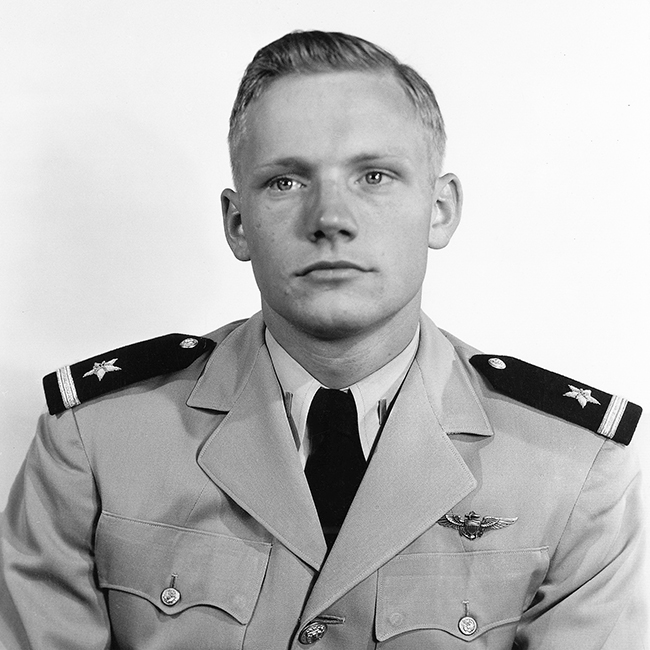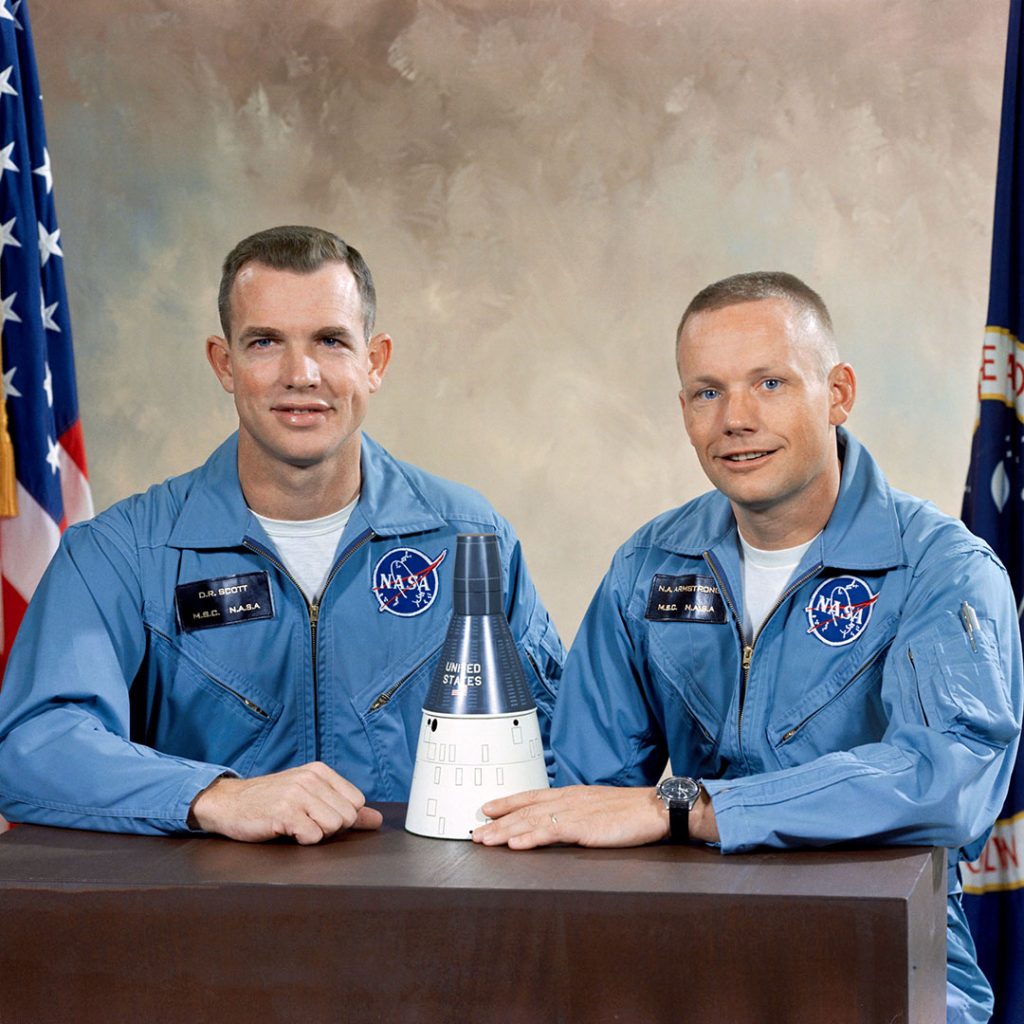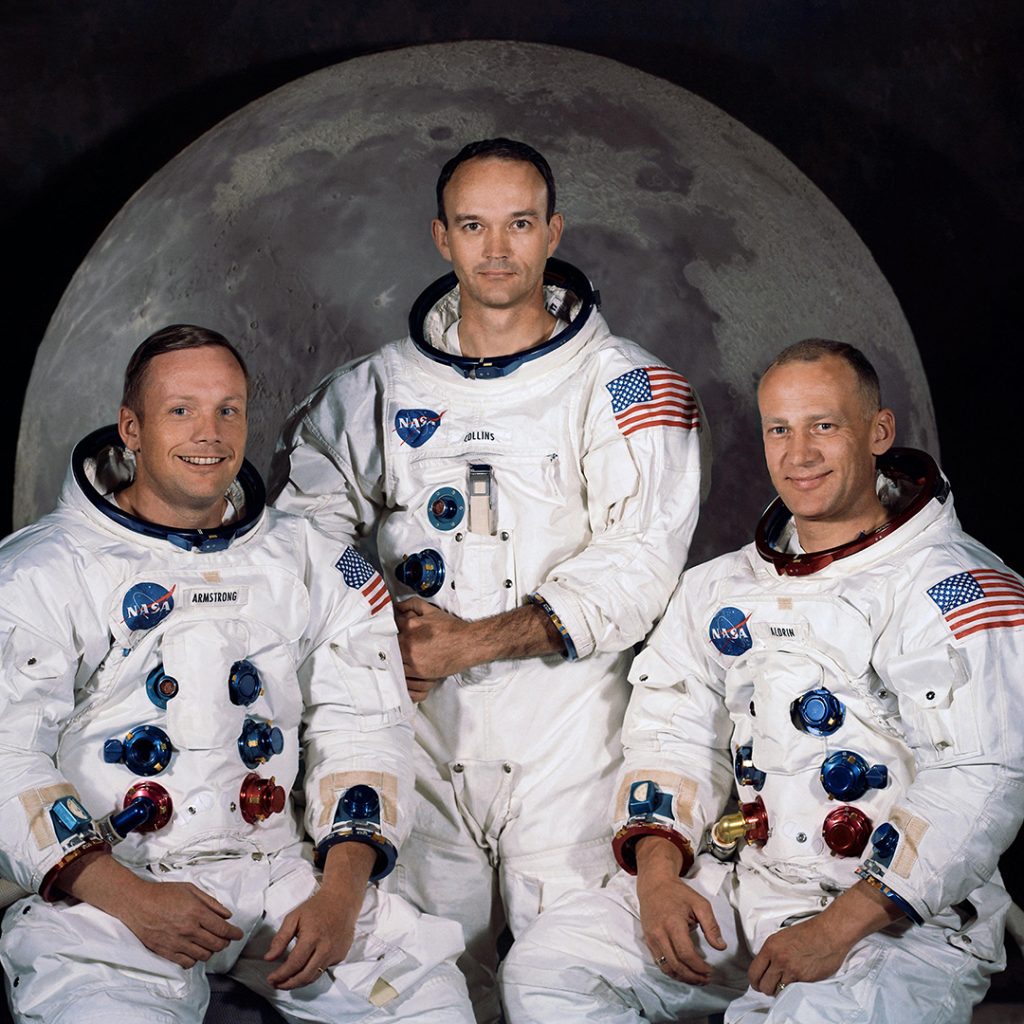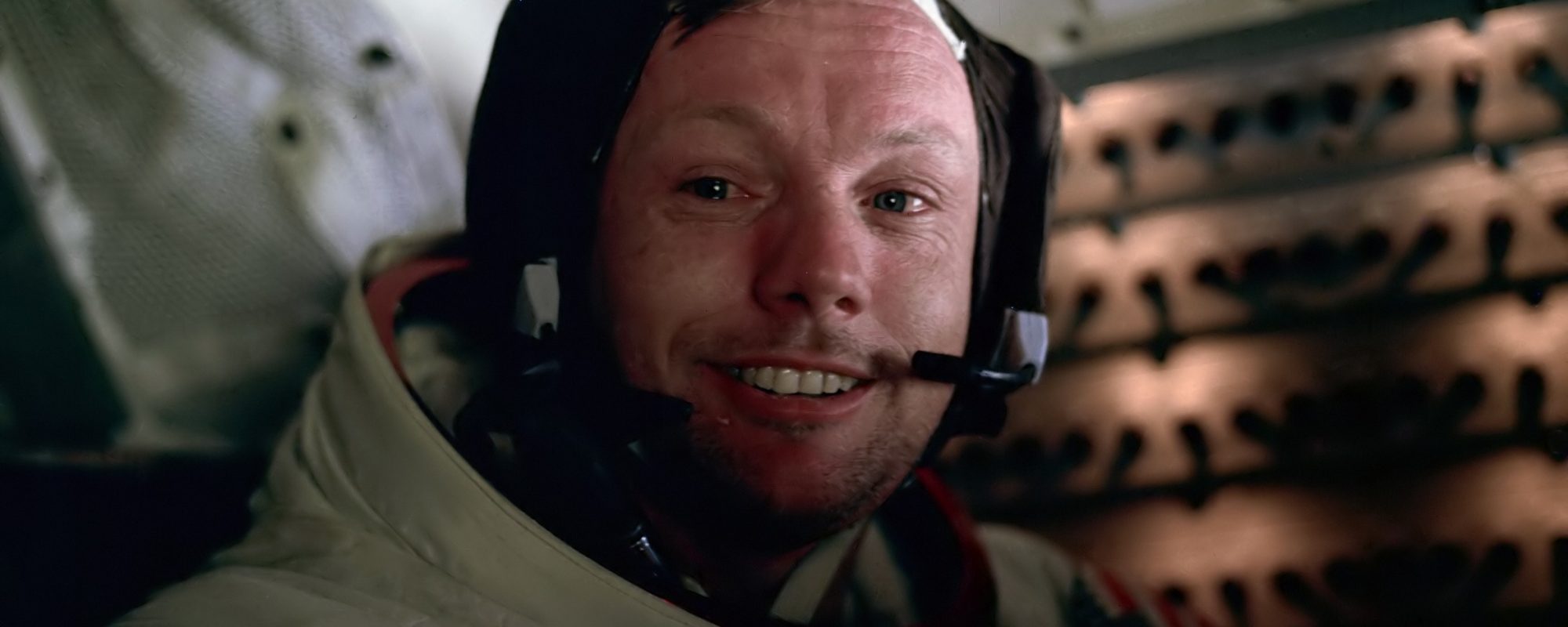
Happy birthday to the first human to walk on the Moon, Neil Armstrong. Today, August 5 would have been his 94th birthday (1930-2012).
Neil Armstrong was born on August 5, 1930 in Wapakoneta, Ohio. After being captivated by flight from an early age, Armstrong began flying as a teenager. He had obtained his pilot’s license by the time he was 16, quite an achievement considering he hadn’t even graduated high school.
He served as a naval aviator from 1949 until 1952. During that time, he flew 78 combat missions during the Korean War, earning two Gold Stars and the Air Medal. Armstrong is pictured here as an ensign in the United States Naval Reserve in 1952. After serving on active duty, he entered the Naval Reserve and returned to Purdue to complete his degree in Aeronautical Engineering.
Armstrong applied for a position with NACA, the National Advisory Committee for Aeronautics (the predecessor of NASA), and began his career as a test pilot. While working as a test pilot, he flew many types of aircraft, from the famous Bell X-1B, the X-15 rocket plane, fighters, bombers, tankers, and transports.

The X-15 program investigated hypersonic flight and provided information that was used in NASA programs from Project Mercury to the Space Shuttle. Test pilots operating the X-15 were air-dropped from a modified B-52 bomber from about 45,000 feet; after which the rocket engine on the X-15 was ignited. This rocket engine gave pilots quite a kick for the first minute and a half to two minutes of their flights.
Armstrong became a civilian test pilot for NASA after the nascent space agency absorbed the National Advisory Committee for Aeronautics (NACA) on October 1, 1958. His status as a civilian test pilot precluded his ability to apply as an astronaut for Project Mercury since those flights were limited to military test pilots.
NASA decided to open up astronaut applications to civilian test pilots with jet experience, 1,500 hours of flying time, and who were under 35 years old. Armstrong, age 32, was selected as one of the “New Nine” or Astronaut Group 2 on September 17, 1962.

Before flying into space, Armstrong trained as the backup Command Pilot for Gemini 5. Armstrong’s first spaceflight was during Gemini 8 along with astronaut David Scott, and they are pictured here in their crew portrait. This mission was supposed to run three days, but it was cut short after a problem with the maneuvering thrusters on the Gemini spacecraft.
Armstrong and Scott successfully rendezvoused and docked with the Agena Target Vehicle, which launched just hours before Gemini 8. The Gemini/Agena spacecraft started to enter a “violent yaw and tumble” about a half hour after docking. Gemini 8 undocked from the Agena, which caused the violent tumble to worsen.
Armstrong and Scott managed to gain control of the spacecraft but only by using the reentry control system thrusters. These thrusters were meant to be used for reentry, so mission rules dictated the crew must return to Earth as soon as possible.
With the crucial rendezvous and docking complete, but other mission objectives left unfinished, Gemini 8 reentered Earth’s atmosphere and splashed down in the Pacific Ocean where they were recovered by teams from the United States Air Force and Navy. Armstrong’s Gemini flight was cut short, but he still had more history to make with his next spaceflight.

On July 16, 1969, astronauts Neil Armstrong, Buzz Aldrin, and Michael Collins sat atop one of NASA’s behemoth Saturn V rockets. Their mission, the first human landing on the Moon. On July 20, 1969, Neil Armstrong and Buzz Aldrin took the controls of the Lunar Module Eagle and started their descent to the lunar surface.
The final seconds of the mission were hair-raising when Armstrong took control of the Lunar Module to avoid a field of boulders strewn across their landing site. With seconds of fuel remaining, Armstrong was able to land the Eagle at 4:17 p.m. Eastern Standard Time.
Both astronauts were due to enter a brief rest period after landing, but it was skipped so the astronauts could perform their EVA. Hundreds of millions of people around the world watched as Neil Armstrong set foot on the Moon at 10:56 p.m. EST.
As he stepped on the lunar surface, Armstrong spoke one of the most memorable phrases in human history. “That’s one small step for Man, one giant leap for mankind.”
Buzz Aldrin followed Armstrong to the surface a short time later. The entire EVA for Apollo 11 lasted over “two-and-a-half hours, ending at 111 hours, 39 minutes into the mission.” Command Module Pilot, Astronaut Michael Collins flew alone in lunar orbit as Armstrong and Aldrin were on the lunar surface. Once Armstrong and Aldrin had completed their EVA, Eagle lifted off the Moon and met with the command module Columbia for rendezvous and headed back to Earth.
These first steps will almost certainly go down in human history as the most important event of the 20th century.
After retiring from NASA in 1971, he began teaching engineering at the University of Cincinnati. Armstrong was also involved with various NASA commissions, from the investigation into the loss of the Space Shuttle Challenger, to the Apollo 13 incident.
August 2012, Armstrong developed complications in the hospital due to a recent bypass surgery to relieve coronary artery disease and died on August 25, 2012, in Cincinnati, Ohio, at the age of 82.
If you’re interested in learning more about the incredible life of the first human to set foot upon another world, check out “First Man: The Life of Neil A. Armstrong” by James R. Hansen.


